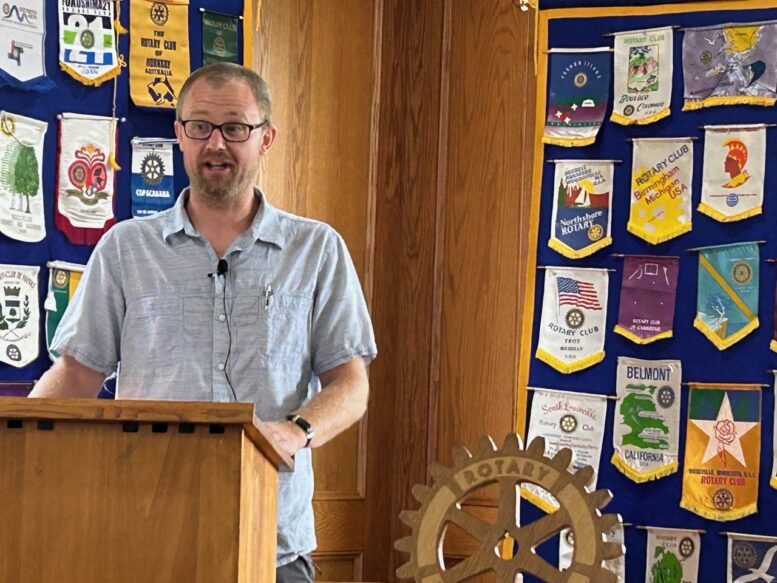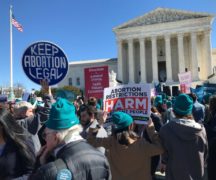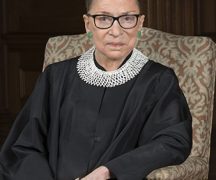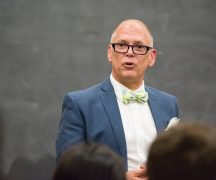By DAVID DUPONT
BG Independent News
When Luke Sundermeier returned to his classroom in Maryville to teach high school social studies, he had an interesting “what I did last summer” tale to share.
His summer travels took him to the Supreme Court while it was in session.
He was one of 20 teachers from around the country to participate in a summer institute sponsored by the American Bar Association and the Federal Judicial Center.
“I told my students in government class I want to go in there and see it for myself not just a tour, but go into the court and experience it with a group and that’s knowledgeable and can explain things as we go,” Sundermeier said. “I got to do that.”
Before sharing with his students though, the 2004 Bowling Green High School graduate came back to his hometown to share his story with the members of the local Rotary Club, including his mother Sandy Sundermeier.
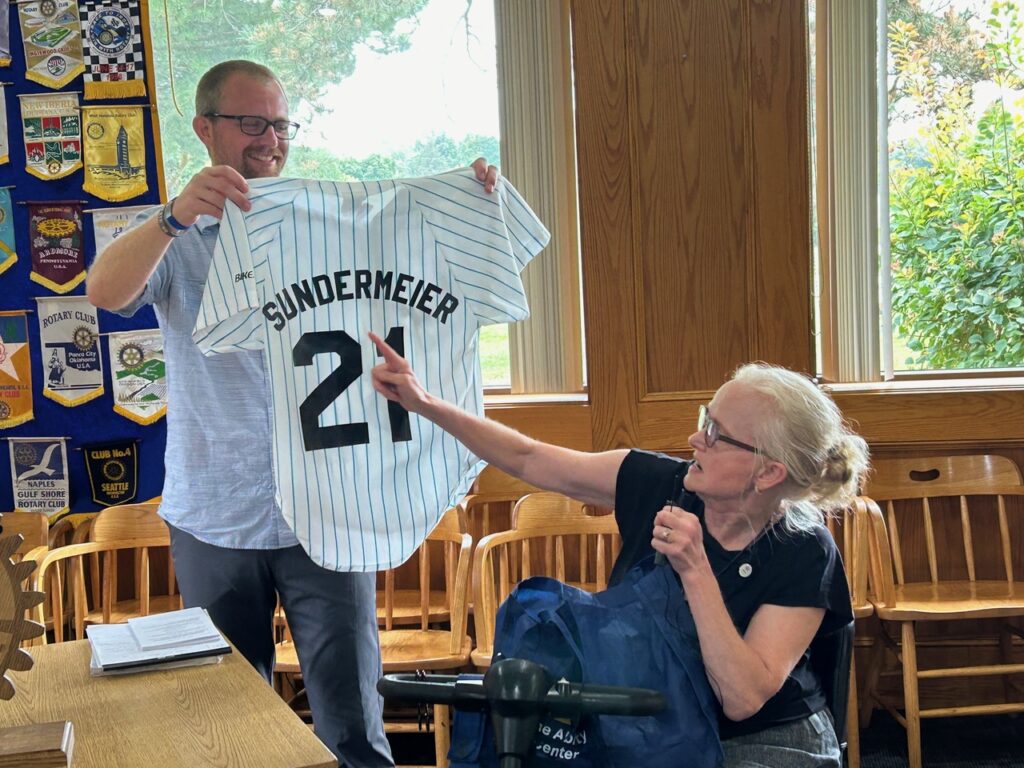
Every summer, Luke Sundermeier said, he takes advantage of educational and travel opportunities, as many as three a summer. He’s visited Senegal and Japan. He’s gone to the White House and the Capitol building. The Supreme Court was a different matter.
The institute participants, however, were uncertain they’d get to attend a session. The court was in session and had a packed docket. “The list of cases were highly controversial, hot button issues,” he said. Those included the presidential immunity case. Then the night before they were scheduled to attend the decision in an Idaho abortion case was leaked ratcheting up the tension.
“It was quite the morning to go in,” Sundermeier said.
They had to surrender their telephones and could only bring in a writing implement and notepad. The U.S, Marshals flipped through the notepad and put it under light.
“This is serious stuff,” Sundermeier said.
Justices emerge from behind a curtain.
It was a session during which decisions were read. No arguments were made.
The cases read included Ohio vs. the EPA and the Perdue Pharma bankruptcy case. Finally Justice John Roberts read the Idaho abortion case that had been leaked the night before.
Following Roberts’ summary of the decision, Justice Ketanji Brown Jackson “read a very direct dissent in which she made some very clear eye contact with other justices on the bench,” Sundermeier said.
Then they hit the buzzer and they left. “It was almost like they couldn’t wait to get out of those chairs and out of those robes.”
Sundermeier said he gained new appreciation for the journalists who cover the court. That included Nina Totenberg of NPR, the maven of the high court’s press corps. She walked in right before the justices came out. “Journalists are everywhere, trying to make sense of it in real time,” he said. “You’re looking at all this complicated text and citations. What does it really mean?”
Sundermeier and his fellow teachers were briefed after the session by the Honorable Robert Dowd, the chief counsel for Roberts. “We were really lucky or else I’d probably still be trying to make sense of it all.”
While in Washington the teachers also heard from federal court justices who had heard cases based on landmark Supreme Court decisions. Those were the Amistad Case involving the rights of enslaved people, the case dealing with the insanity plea of Charles Guiteau who assassinated President Garfield, and the Rosenberg case, which most of the educators teach, involving the use of capital punishment on Julius and Ethel Rosenberg, who had been convicted of espionage.
Sundermeier said the visit will inform his teaching on the Supreme Court. But students will have to take his word that he was there. Without his phone, he has no photos to show.

